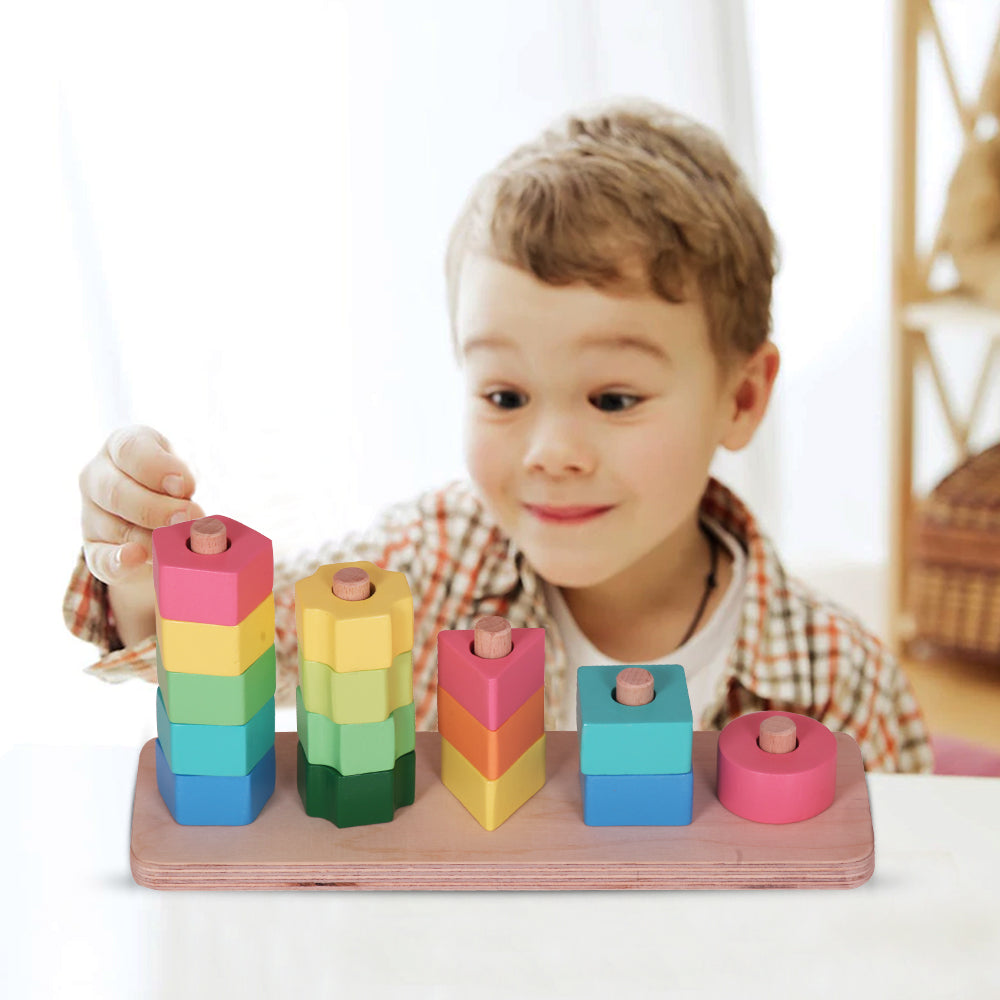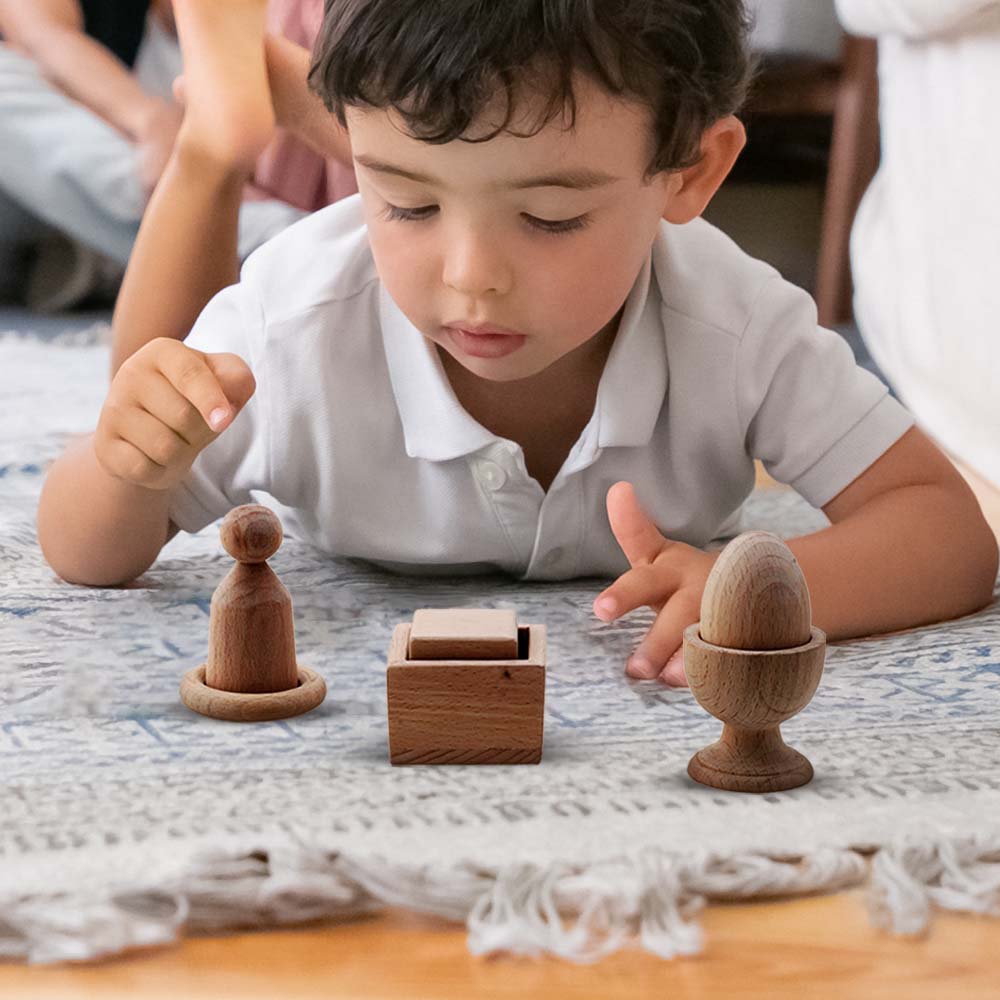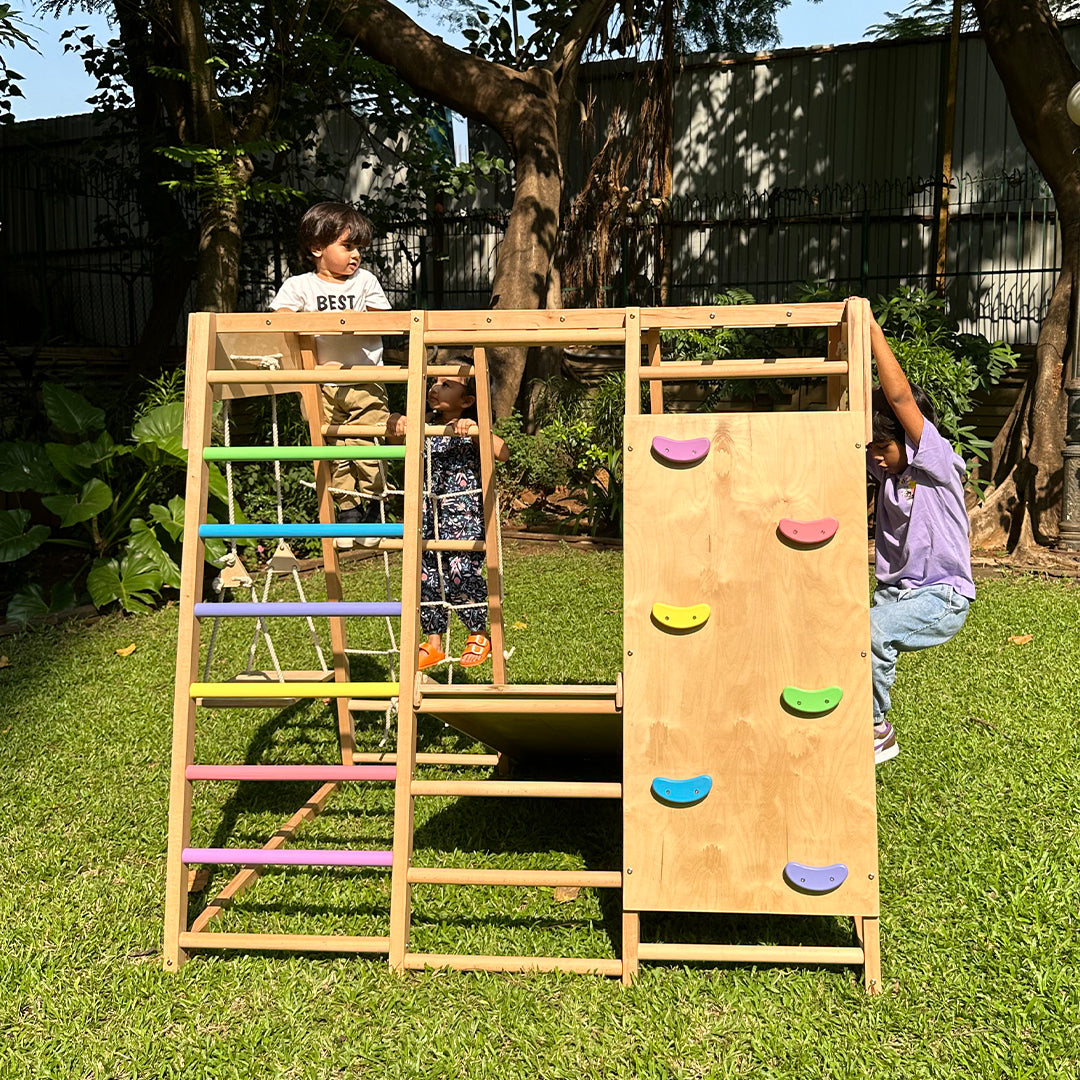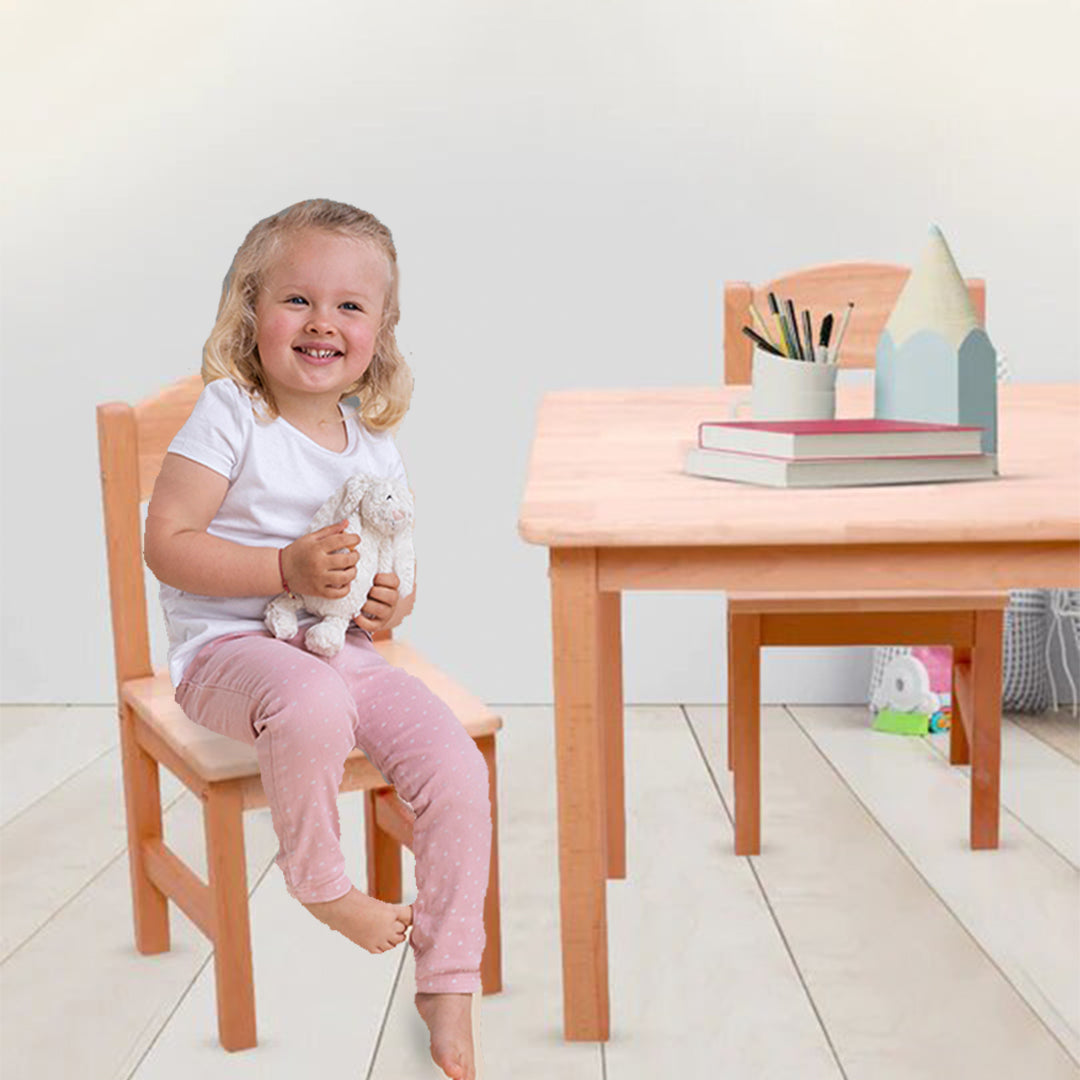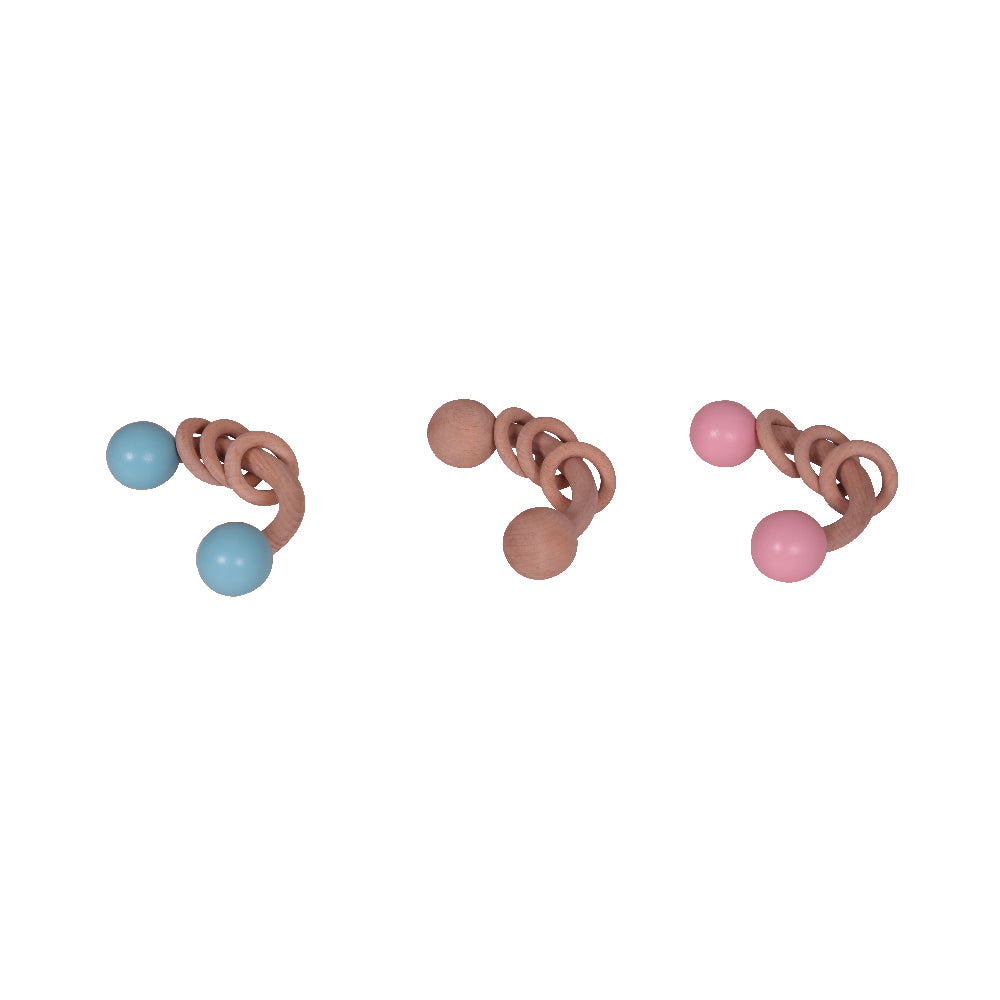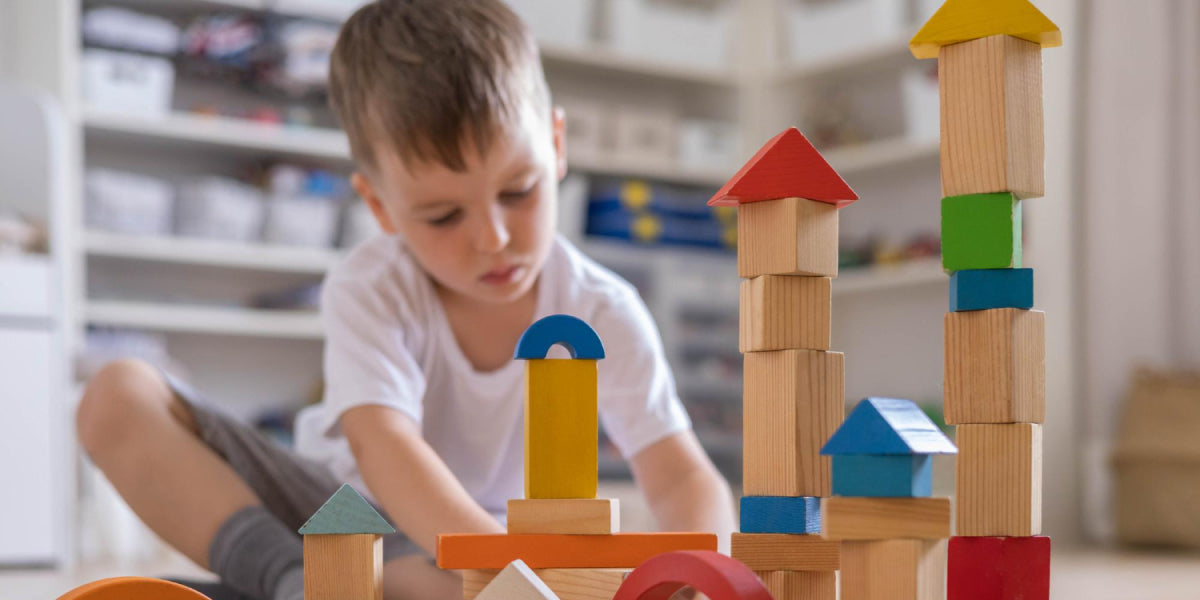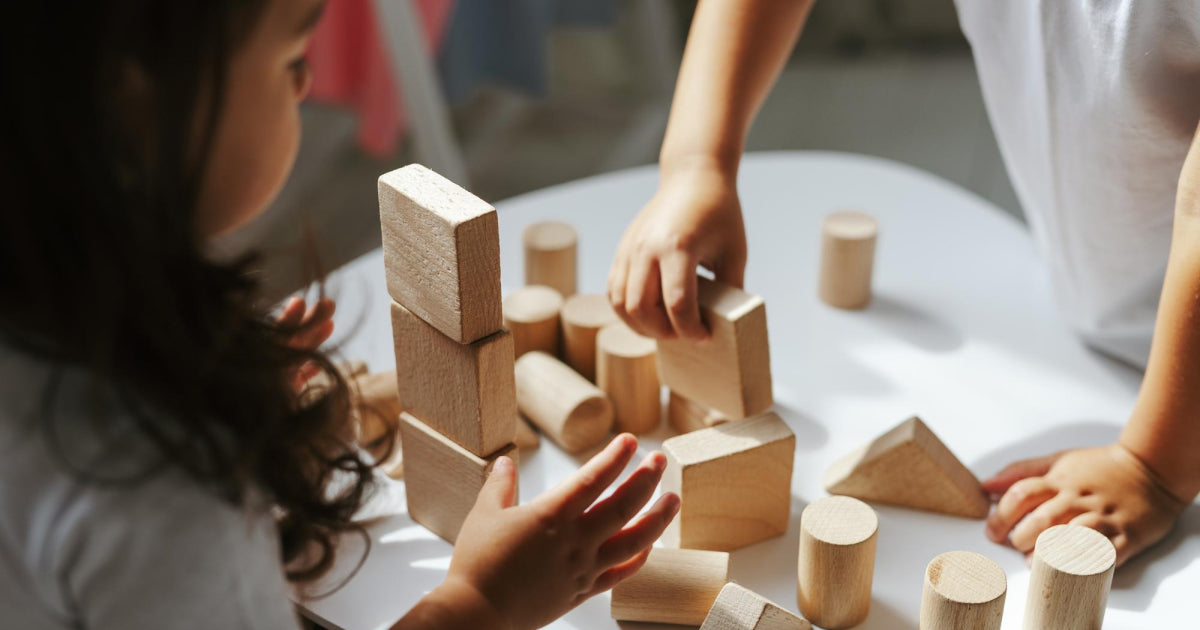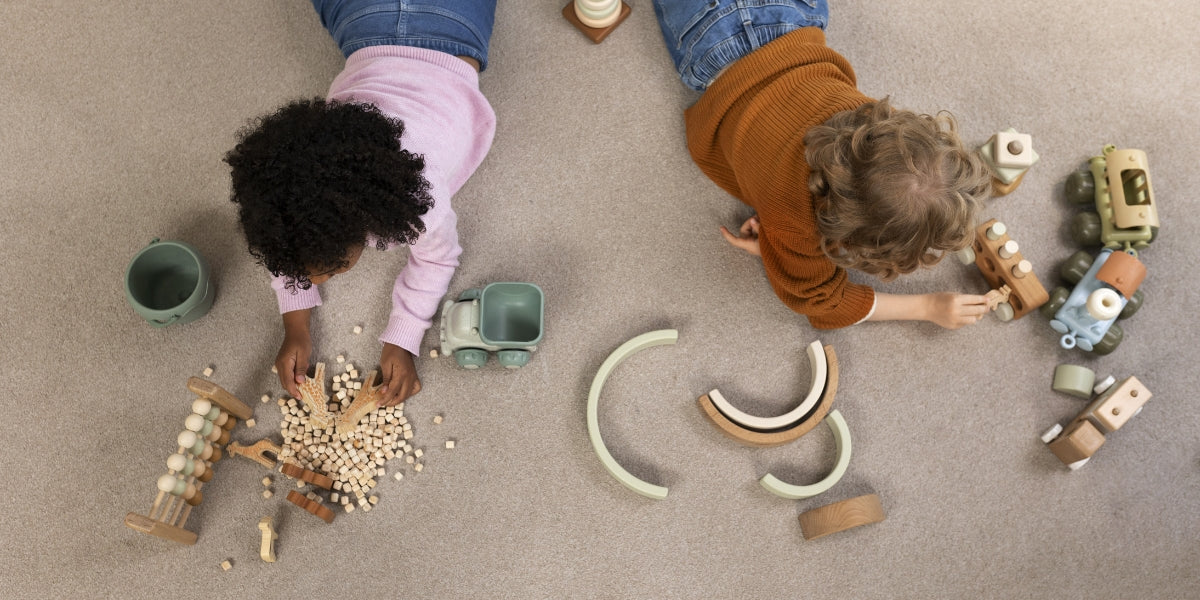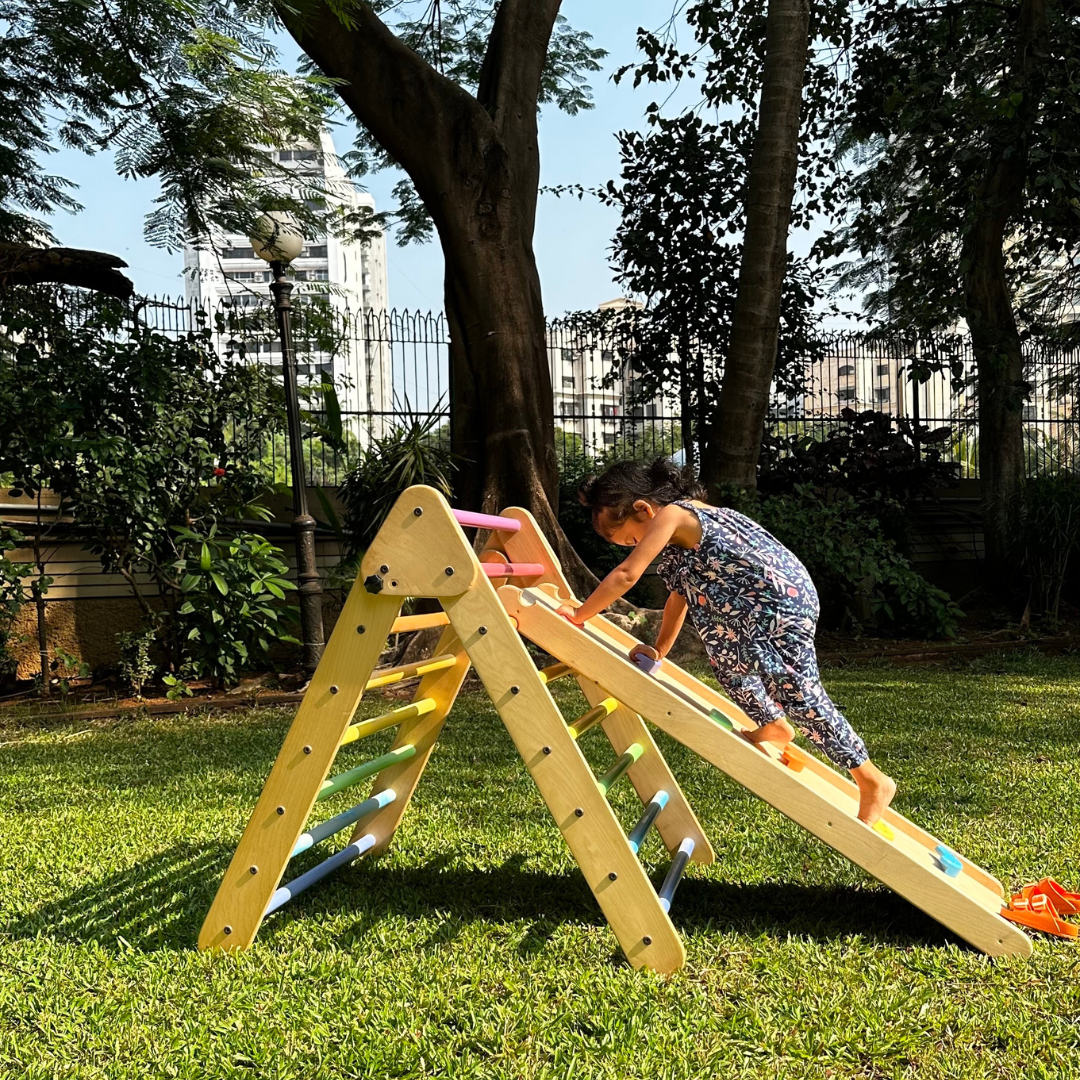Walk into any child’s room today and you’ll probably find a mountain of plastic toys, some blinking, some beeping, and many already missing a piece or two. They’re everywhere. But if you’ve ever watched a child quietly stack wooden blocks or carefully turn the pieces of a simple wooden puzzle, you’ll notice something different. The play is slower. More focused. Calmer.
This is not just nostalgia. Wooden toys have something that plastic can't. They call for imagination rather than dictating it. They don't wear out nearly as quickly, don't feel cheap, and somehow look like they belong in your house, not the bottom of a toy box.
If you’ve been wondering whether wooden toys are worth the switch, this blog lays it out clearly: the why, the how, and the what-it-means for your child. Let’s look at ten real reasons wooden toys aren’t just charming, they’re better.
Understanding the Difference: Wooden Toys vs Plastic Toys
On the surface, a toy is just a toy. However, if you examine it more closely, particularly from the perspective of a developing child, the substance that it is created from really does make a difference.
Plastic toys do the plaything for your kid. They blink, beep, sing, and usually have only one way of playing. That may catch some attention for a bit, but it does not always allow for creativity or problem-solving. They are also very breakable, clutter quickly, and typically end up abandoned, or worse, in a dumpster.
Wooden toys go about it differently. They're quieter, sure, but that's sort of the idea. They encourage your child to take his time and play with the toy itself instead of being entertained by it. A plain wooden block can be anything: a train, a tower, or a little table. And since they're constructed out of natural materials, they are solid, warm, and tangible in your child's hands.
So the difference isn't merely what they're constructed of. It's what they enable. Wooden toys demand more of your child, and that is a positive.
10 Reasons to Choose Wooden Toys
1) Wooden Toys Are Natural
Wooden toys are made from actual, living materials, such as beechwood, rubberwood, or maple, which come directly from nature. This provides them with a sense of warmth and naturalness that plastic cannot replicate. The wooden grains, textures, and heaviness provide a richness in the senses that children respond to naturally. Most wooden toys are also coated with non-toxic, water-based oils or paints, ensuring they're safe for toddlers who learn about the world through touch and mouth contact. Rather than shiny, colored plastic, machinery-produced toys, children play with toys that are real to the touch, earthy, and authentic, introducing a pinch of nature into daily play.
2) Wooden Toys Encourage Imaginative Play
When children play with wooden toys, there are no flashing lights, no music, and no buttons that instruct them on what to play. And that's just the idea. A set of simple wooden blocks can be a city, a zoo, a rocket ship, or something your child envisions that day. These wooden toys give children space to fill in the blanks, create narratives, and act out infinite possibilities. This type of open-ended play not only enhances creativity, it teaches children to think for themselves and problem-solve independently. It's introspective, quiet play, but that's where the magic happens.
3) Wooden Toys Engage Sensory Discovery
There's something earthy about the texture of wood in a child's hand. The natural feel, the soft weight, and the warmth all stimulate the senses in a way that plastic does not. Wooden toys are inviting to the touch. They're typically smooth, occasionally with a quiet grain pattern, and they produce soft, reassuring sounds when tapped or stacked. For small children just learning to explore the world through their senses, this type of tactile experience is invaluable. It allows them to associate movement, texture, and sound in a peaceful, significant manner, without all that overstimulation.
4) Wooden Toys Are Aesthetically Pleasing
Wooden toys are quietly elegant. Their warm colors, natural feel, and simple shapes evoke a sense of serenity that's all too often absent in the world of bright, loud plastic. From a stacker, puzzle, or set of blocks, these toys resemble keepsakes rather than clutter. They integrate into your world without screaming for notice, no blinking lights or neon hues, simply handsomely designed works that beg to be played with. And when play is finished, they needn't be stored away. They're equally as delightful on a shelf as they are in a child's hands.
5) Wooden Toys Are Environmentally Friendly
Plastic toys tend to leave a trail of trash from manufacture to the trash can. Wooden toys, however, are made from renewable resources and constructed to last. Most are crafted with responsibly sourced wood and coated with water-based paints or natural oils, safe for both the planet and your child. And when they finally do arrive at the end of their life cycle, they go back to the earth without harming it. Wearing wooden toys isn't simply healthier for your child, it's also a silent acknowledgment of the type of world you wish they would develop in.
6) Wooden Toys Are Safe
Whereas safety is not a choice when it comes to your child's toys, it's a necessity. Most plastic toys, particularly inexpensive ones, can have toxic chemicals such as BPA, phthalates, or PVC in them, and these can be particularly dangerous when toys are bound to end up in tiny mouths. Wooden toys, particularly those produced by conscientious manufacturers, tend to be painted with non-toxic, water-based coatings or natural oils and are made of untreated wood. Their smooth corners, robust construction, and lack of small loose parts make them much safer for inquisitive toddlers. You’re not just avoiding toxins, you’re giving your child something designed with their well-being in mind.
7) Wooden Toys Are Durable and Long-Lasting
Unlike many plastic toys that crack, fade, or stop working after a few months, wooden toys are built to last. They can handle rough play, curious hands, and even a few tumbles without falling apart. Their solid construction ensures they won't wear out too fast, which makes them ideal for daily use and even being passed onto future generations. Over time, they may develop warm signs of love and wear, but that only adds to their charm. Wooden toys age with your child and sometimes with your household.
8) Wooden Toys are environmentally sustainable
Wooden toys aren't simply environmentally friendly, they're even more sustainable. Many are crafted from sustainably harvested wood so forests remain safe and replanted. Fewer pollutants are involved in their creation, and because they're biodegradable, they're not going to lie dormant in a landfill for centuries. Even when they're outgrown, wooden toys go back to the earth without leaving plastic waste as a memory. It's a simple decision that quietly honors the earth.
9) Wooden Toys Are a Valuable Long-Term Investment
Investing in wooden toys is investing in quality rather than quantity. Although they may be a little more expensive in the beginning, their longevity and enduring popularity make them well worth it. They can handle rough play and be passed on from one child to the next, providing memories that last for generations. In contrast to most plastic toys that soon go out of style or get broken, wooden toys remain interesting and in one piece, providing long-term value for your wallet and your child as well.
10) Wooden Toys Support Montessori and Waldorf Learning
Wooden toys perfectly align with the principles of Montessori and Waldorf education, which emphasize hands-on learning and connection to the natural world. These toys encourage children to explore at their own pace, fostering independence and deep focus. Their simple, open-ended design invites creativity, problem-solving, and sensory engagement, key elements in these educational philosophies. By choosing wooden toys, you’re supporting a learning environment that values thoughtful play and holistic development.
How Toy Choices Affect Your Child's Development
Toys children play with are not only for entertainment, they define how they think, move, and engage with the world. Flashy plastic toys tend to control the play for them, leaving little time for creativity or discovery. Wooden toys, on the other hand, encourage a child to slow down, make choices, and direct their own play. They develop patience, generate curiosity, and enhance cognitive and motor abilities in a more holistic, meaningful manner. Careful toy selection during early years may establish a foundation for how a child learns, problem-solves, and interacts with the world.

